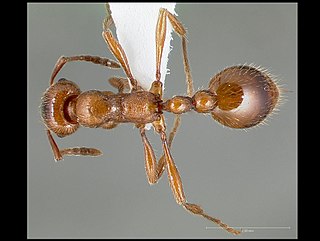
Manica hunteri is a species of ant in the family Formicidae.
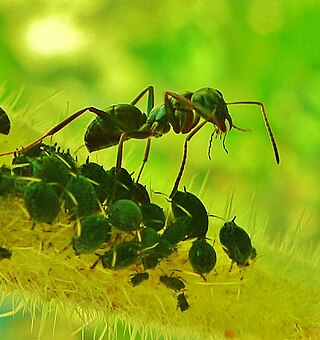
Formica glacialis is a species of ant in the family Formicidae.
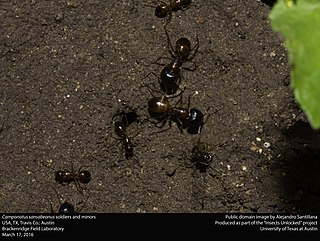
Camponotus sansabeanus is a species of ant in the family Formicidae.

Tetramorium hispidum is a species of ant in the subfamily Myrmicinae. Tetramorium hispidum differs from similar ants in the Myrmicinae subfamily by the structure surrounding the ant's antennal insertions. Short, stubble-like hairs exist on the pronotum and frontal carinae. The antenna of Tetramorium hispidum contains 11 segments.

Aphaenogaster uinta is a species of ant in the family Formicidae.
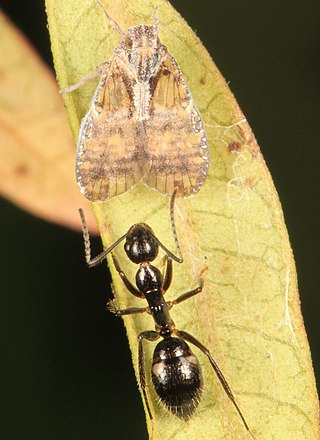
Camponotus sexguttatus is a species of ant in the family Formicidae.
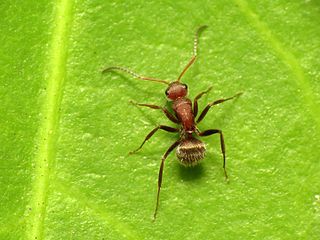
Camponotus planatus, known generally as the compact carpenter ant or short carpenter ant, is one of three Camponotus species that is polygynous, or has more than one queen. It is a species of ant.

Pheidole metallescens is an ant, a species of higher myrmicine in the family Formicidae.
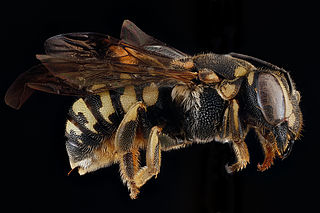
Dianthidium simile is a species of leafcutter, mason, and resin bees in the family Megachilidae. It is found in North America.

The cherry leaf miner bee is a species of miner bee in the family Andrenidae. Another common name for this species is cherry plum miner. It is found in Central America and North America.
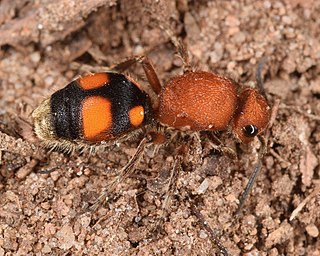
Dasymutilla quadriguttata is a species of velvet ant in the family Mutillidae.

Trachymyrmex nogalensis is a species of higher myrmicine in the family Formicidae.

Osmiini is a tribe of leafcutter, mason, and resin bees in the family Megachilidae. There are about 19 genera and at least 1,000 described species in Osmiini.

Camponotus quercicola is a species of ant in the family Formicidae that is endemic to California and commonly nests in oak trees, as they usually inhabit oak forests.
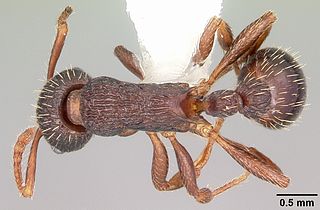
Myrmica spatulata is a species of ant in the family Formicidae. It is found in the forests of the middle and eastern part of the United States and Ontario in Canada.
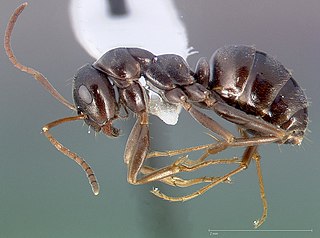
Formica microphthalma is a species of ant in the family Formicidae.

Neivamyrmex pilosus is a species of army ant in the family Formicidae.

Myrmelachistini is a tribe of ants in the family Formicidae. There are at least 2 genera and 50 described species in Myrmelachistini.

Pogonomyrmex subdentatus is a species of ant in the family Formicidae.

Brachymyrmex patagonicus is a species of ant in the family Formicidae. B. patagonicus, commonly known as the dark rover ant, is native to Argentina and Paraguay. They were first reported in St. Tammany Parish, Louisiana in 1978 from a single colony collected in 1976. It is believed that the species was introduced through New Orleans, which is a common entry point for many tropical species, but other locations such as Mobile, Alabama, or Pensacola, Florida, are also likely. For many years B. patagonicus, B. musculus, and B. obscurior were misidentified as being separate species but after a comparison of specimens from the Louisiana State University Arthropod Collection (LSUC), it was found that all three were the same species. B. patagonicus is considered a nuisance pest due to their tendency to infest man made structures but they have received a lack of attention because they do not bite, sting, or carry disease.



















